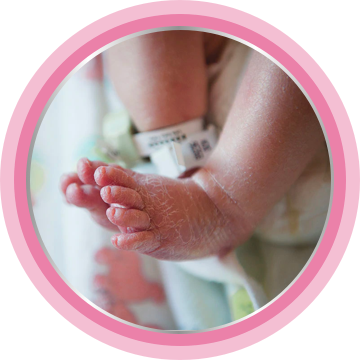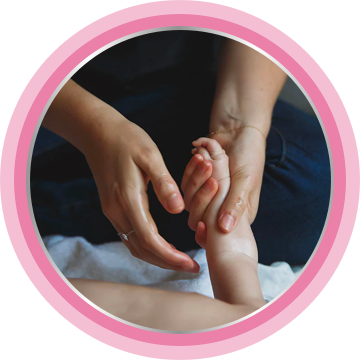Understanding and Treating Minor Muscle Sprain in Children
Muscle sprains in children are as common as bumps, scrapes, cuts, and burns, due to their tendency to explore the environment around them fearlessly; they will jump that gap between stepping stones and will try to touch that flower with thorns as a result. Therefore it is important for all parents to be ready for the eventuality of sprains in children.
But what is a sprain? It is a type of muscle pain that happens in specific parts of the body, mainly in the spaces where seperate bones are connected. Muscle pains have various causes—from injury or overuse to stress, infection, or even drug side effects1—but this article will specifically focus on muscle sprains.
A sprain happens when a ligament—the tough bands of fibrous tissue that connects two bones together in joints—is overextended or torn while severely stressing a joint2. While this commonly happens in the ankle, spraining can also happen in the knee, wrist and thumb

Causes
Factors that usually contribute to sprained children's feet include, but are not limited to:
Slippery or uneven surfaces underfoot that can cause your child to lose their balance This might result in a child's foot making a sudden twisting motion, or for them to throw out their hands to catch their fall, causing their wrists or thumb to suddenly absorb the shock of a child's full body weight in mere seconds
Fatigue
Tired muscles are less likely to provide good support for the joints. In children, muscles are not yet fully developed so they are more likely to be at greater risk
Ill-fitting footwear
Whether it be too-tight or too loose, ill-fitting footwear prevents a child’s feet from making stable traction with the ground underneath him or her
How do you know it's a sprain?
Some tell-tale signs of sprains in children are3:
- The affected area looks swollen or bruised
- Your child feels pain at the affected area, along with some tenderness and weakness
- Your child can't bear any weight on the injury or use it normally
- Your child feels that there are muscle spasms or cramping in the affected area

First aid for children's sprain
A good first aid tip to keep in mind is the acronym R.I.C.E., which stands for rest, ice, compression, and elevation4,5,6.
Rest
Rest the injured area until it becomes less painful. Avoid putting any kind of weight or pressure on it. If possible, have your child lie down flat on his/her back for a sprained foot.
Ice
Wrap an ice pack or cold compress in a cloth or towel and place it over the injured part right away. Continue for no more than 20 minutes at a time. This can help to reduce the pain, swelling, and bruising.
Compression
Wrap the sprained child's foot or sprained area with an elastic compression bandage for comfortable support. Make sure that it isn't wrapped too tightly that it prevents circulation.
Elevate
Raise the injured part above heart level (if your child is lying down) to help decrease swelling. You can assist this by placing pillows or a rolled up towel underneath the injured area.
As long as it does not hurt your child too much, he or she can gingerly apply a bit of weight on the injured ankle to be able to walk or stand once the swelling and redness have subsided7.

You can also give your child ibuprofen (if he or she isn't allergic to it or aspirin) to help with the pain. Make sure to give the dose as recommended by the medicine manufacturer on the packaging. Another effective method is to apply ointment containing eucalyptus oil and camphor which possess anti-inflammatory properties to help deal with swelling and minor pain.
If not seriously injured, sprains in children's feet usually heal by themselves within a day or two, as long as the R.I.C.E method and medicine administration is carried out. But if your child is still in a lot of pain, still can't bear any weight on the injured area, or if you are unsure about the injury itself, it is still best to take your child to see a doctor or healthcare specialist.
References
- Muscle Pain: Possible Causes."" Cleveland Clinic. Accessed 19 September 2020.
- https://my.clevelandclinic.org/health/symptoms/17669-muscle-pain/possible-causes
- Sprains."" Mayo Clinic. Accessed 19 September 2020.
- https://www.mayoclinic.org/diseases-conditions/sprains/symptoms-causes/syc-20377938
- Sprains and strains."" NHS. Accessed 19 September 2020.
- https://www.nhs.uk/conditions/sprains-and-strains/
- Sprains and Strains in Children."" Cedars Sinai. Accessed 19 September 2020.
- https://www.cedars-sinai.org/health-library/diseases-and-conditions---pediatrics/s/sprains-and-strains-in-children.html
- First Aid: Strains and Sprains."" Johns Hopkins Medicine. Accessed 19 September 2020.
- https://www.hopkinsallchildrens.org/Patients-Families/Health-Library/HealthDocNew/First-Aid-Strains-and-Sprains
- How to treat strains and sprains."" St. John Ambulance. Accessed 19 September 2020.
- https://www.sja.org.uk/get-advice/first-aid-advice/bones-and-muscle-injuries/strains-and-sprains/
- Foot Sprain in Children: Care Instructions."" My Health Alberta. Accessed 20 September 2020.
- https://myhealth.alberta.ca/Health/aftercareinformation/pages/conditions.aspx?hwid=ud3855




